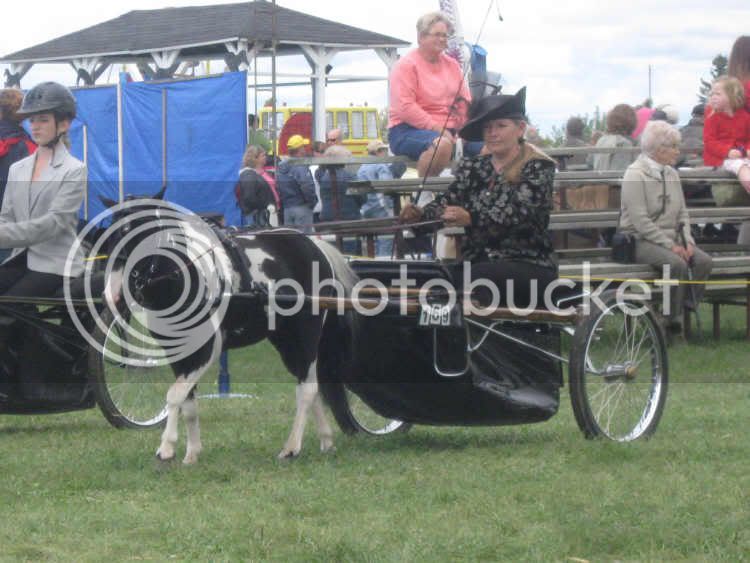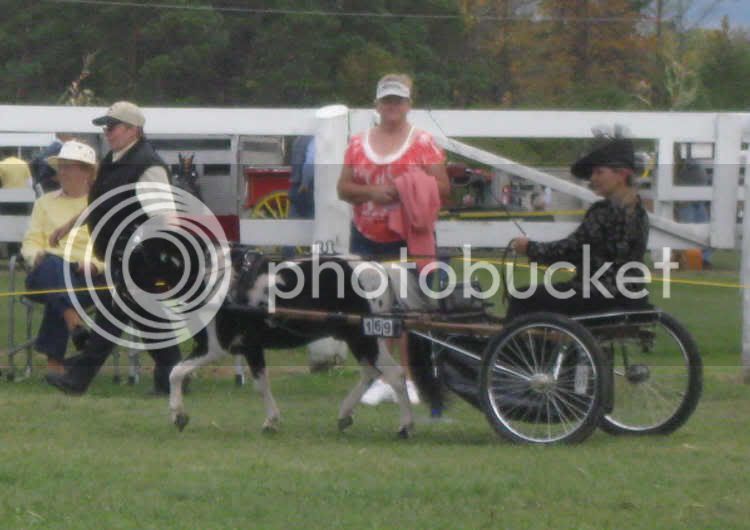I am needing an explanation regarding how I am seeing horses bitted, especially in the Pleasure(?) or Fine Harness classes.
I haven't been driving for very long, but have seen - and groomed for - large horse driving classes. Those horses who drive in an overcheck bridle, without exception, drive with an overcheck bit. The purpose originally being that, the overcheck bit keeps the head up, and the regular bit "sets" the head by the driver's hand. (and yes, there has been abuse of the overcheck as "style" dictated)
In the AMHA magazine, I have repeatedly seen minis driven in overcheck bridles, with the overcheck attached to the driving bit, as well as the rein. Worse! Some of them have a running martingale attached to the driving rein!!
This flies in the face of anything I have ever learned regarding bits, biting and use thereof, but I have only ever ridden horses previous to this year, and perhaps driving is different?
Here's what I see:
Overcheck attached to the bit, which should keep the horse from lowering his head too much, but can be adjusted to keep the head UP
Rein attached to the bit and going through rein terrets, back to the driver's hand, the terrets themselves placed at a level seemingly correct for attaining a decent headset
Rein going through a running martingale before the terret, the running martingale being designed to keep the horse's head from going above the point of control, but able to be adjusted so as to keep the head DOWN
The bit would appear to be "weighted" in three different directions: up, back and down
What am I missing? And how does this work? Is it an issue with mouth size on the minies, i.e. mouth too small for 2 bits?
I haven't been driving for very long, but have seen - and groomed for - large horse driving classes. Those horses who drive in an overcheck bridle, without exception, drive with an overcheck bit. The purpose originally being that, the overcheck bit keeps the head up, and the regular bit "sets" the head by the driver's hand. (and yes, there has been abuse of the overcheck as "style" dictated)
In the AMHA magazine, I have repeatedly seen minis driven in overcheck bridles, with the overcheck attached to the driving bit, as well as the rein. Worse! Some of them have a running martingale attached to the driving rein!!
This flies in the face of anything I have ever learned regarding bits, biting and use thereof, but I have only ever ridden horses previous to this year, and perhaps driving is different?
Here's what I see:
Overcheck attached to the bit, which should keep the horse from lowering his head too much, but can be adjusted to keep the head UP
Rein attached to the bit and going through rein terrets, back to the driver's hand, the terrets themselves placed at a level seemingly correct for attaining a decent headset
Rein going through a running martingale before the terret, the running martingale being designed to keep the horse's head from going above the point of control, but able to be adjusted so as to keep the head DOWN
The bit would appear to be "weighted" in three different directions: up, back and down
What am I missing? And how does this work? Is it an issue with mouth size on the minies, i.e. mouth too small for 2 bits?





